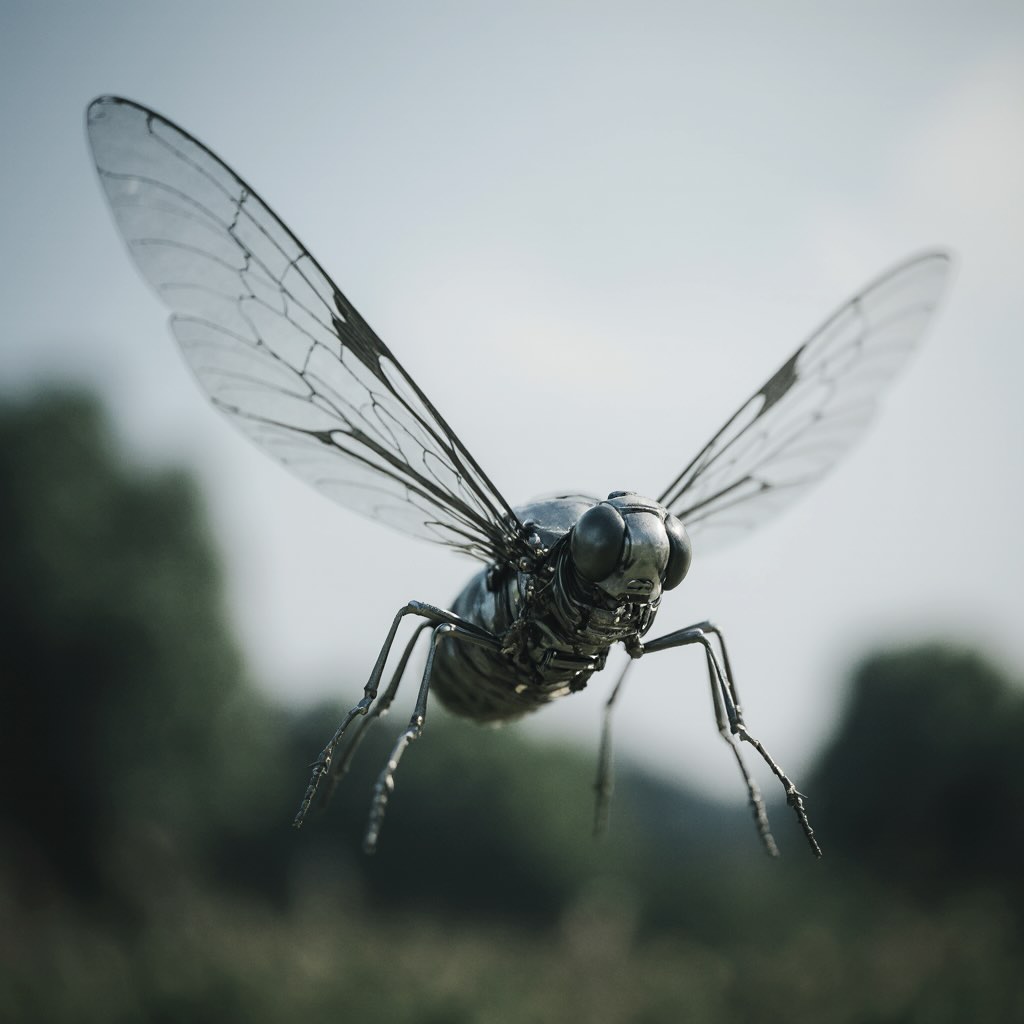
MIT researchers built a 750 mg flapping-wing robot inspired by biomimicry that uses a deep-learned model predictive controller to perform insect-like high-speed maneuvers, flips, and saccades with precision even under strong wind and hardware uncertainties.
If you’ve ever watched a fruit fly pull off dizzying aerial stunts — sharp turns, rapid flips, or darting away from danger — you’ve seen nature’s finest aerobatic engineers at work. Now, researchers at MIT have brought that same level of agility to a 750-milligram flapping-wing robot 🦾🐝, using an AI-powered control system inspired by insect neurology. This leap forward in robotics using biomimicry narrows the performance gap between tiny flying robots and their insect role models, unlocking new possibilities for agile micro-drones.
Insects like flies and bees can accelerate at over 10 m/s², perform sharp “body saccades” to avoid predators, and even flip in milliseconds. In contrast, insect-scale robots have long been slower, less agile, and more prone to losing stability, especially when faced with gusts of wind or imperfect hardware tuning.
The challenges are many:
The MIT team tackled all of these with a deep-learned robust tube model predictive controller (RTMPC) — a mouthful, but in essence, it’s a brainy AI pilot that can plan and adjust for uncertainty, much like an insect’s nervous system.
Instead of running heavy math on the tiny onboard hardware, the researchers used a two-stage strategy:
This setup is a lot like an insect’s brain: the central nervous system decides the big-picture moves, while motor neurons execute them extremely fast. The result? The robot can run the learned controller in real time at up to 1000 updates per second — fast enough to keep pace with its 330 Hz wingbeats! ⚡
With its new AI pilot, the 750-mg robot set new benchmarks in insect-scale aerobatics:
The robot zipped through:
These aren’t just pretty patterns — they test turning precision, acceleration, and disturbance rejection.
A big part of the success comes from biomimetic:
When compared to real fruit flies, the robot matches their acceleration-to-weight ratio, pitch/roll angles, and even robustness against wind gusts.
Right now, the robot still relies on external motion capture, power, and computation. But the research team is optimistic:
Tiny agile robots could:
The biomimetic approach here isn’t just about copying nature — it uses lessons from nature to push our flying technology to new levels. In this case, the MIT robot doesn’t just fly like an insect — it advances our aerial robotics technology.
This breakthrough shows that deep-learning control + biomimetic hardware can finally give insect-sized robots the agility of their natural counterparts. With further miniaturization, we might see fully autonomous micro-drones buzzing into action — not just mimicking insects, but using their strategies to expand what’s possible in our technology at that scale. 🐝🤖
Biomimetic 🐾 Copying designs or functions from nature — like making a robot fly by mimicking how insects flap their wings. - More about this concept in the article "Boosting Organic Rankine Cycle Systems Efficiency with Biomimetic 🪶".
Flapping-Wing Robot 🪽 A tiny flying machine that moves by rapidly flapping wings (like a fly or bee) instead of spinning propellers like a drone.
Body Saccade 🔄 A fast, sharp turn in mid-air, used by insects to quickly change direction and confuse predators.
Dielectric Elastomer Actuator (DEA) ⚡ A soft, stretchy artificial muscle that moves when electricity is applied, perfect for powering small flapping wings.
Robust Tube Model Predictive Control (RTMPC) 🧠 A smart control method that predicts the future path of the robot while accounting for disturbances like wind, keeping it “inside a safe flight tube.”
Imitation Learning 🤖📚 A machine learning method where an AI learns to copy the actions of an expert, just like a student learning from a teacher.
Neural Network (NN) 🧩 A computer model inspired by the brain, made of “neurons” that process information and make decisions for the robot in real time. - More about this concept in the article "Smarter Grids with Brains 💡🤖 How AI Is Supercharging Renewable Energy Microgrids".
Aerobatics ✈️ Fancy, skillful flying maneuvers — flips, sharp turns, and other stunts that test agility.
Wind Disturbance 💨 Unexpected airflow that pushes the robot off course — a big challenge for small, lightweight flyers.
Motion Capture System 🎥 A setup with cameras and markers that tracks the robot’s position and movement in real time, like in movie special effects. - More about this concept in the article "Unlocking Human Motion: How AI is Revolutionizing Muscle Control 🚶♂️💡".
Source: Yi-Hsuan Hsiao, Andrea Tagliabue, Owen Matteson, Suhan Kim, Tong Zhao, Jonathan P. How, YuFeng Chen. Aerobatic maneuvers in insect-scale flapping-wing aerial robots via deep-learned robust tube model predictive control. https://doi.org/10.48550/arXiv.2508.03043